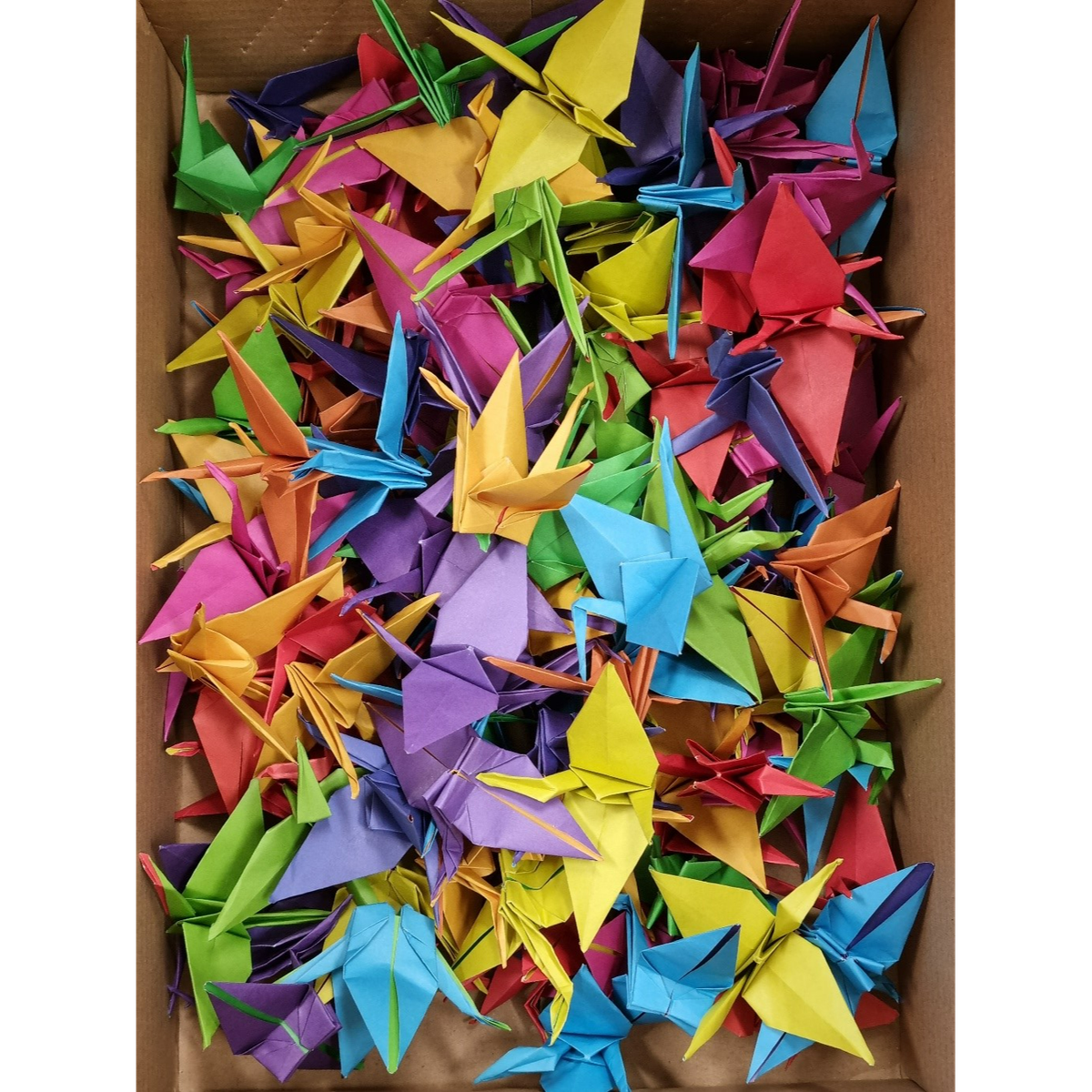Languages

1000 Cranes Club
Next year marks 80 years since the bombings of Hiroshima and Nagasaki, the first and only times nuclear arms have been used during warfare. To recognise the significance of this event and promote peace, Gisborne Secondary College staff and students are invited to participate in the 1000 cranes project.
We aim to fold 2000 origami cranes by the August 2025 anniversary. 1000 will be sent to the Children’s Peace Monument in Hiroshima Peace Memorial Park. The other 1000 will be displayed at the college.
Beginning Term 4, staff and students are invited to fold cranes in H2 every Monday lunchtime. All materials will be provided, including instructional materials and support for those that have never folded origami before.
Kristeen Quarrier – Languages Curriculum Area Leader
Why cranes? Sadako’s Story – A summary by College Languages Captain Patrick
The paper crane has become a symbol of the bombing of Hiroshima and of peace, following the death of a girl from Hiroshima named Sadako Sasaki. Sadako was only 2 years old when the bomb was detonated over Hiroshima on the 6th of August 1945. She survived the blast; however, she and her mother were caught in black rain, the drops of which were laced with the highly radioactive fallout.
Many years later, Sadako developed leukaemia because of radiation exposure from the bomb. She was admitted to hospital in Hiroshima and given no more than a year to live.
One day, Sadako received some paper cranes from a local high school club. She set herself the goal of folding 1000 of them, as it was believed that the folder would be granted a wish. According to an exhibit in the Hiroshima Peace Memorial Museum, which a few Gisborne Secondary College students were lucky enough to visit this year, she exceeded her goal by 300.
On the 25th of October 1955, Sadako passed away of her illness, at the age of 12 years. In the years following, Sadako’s schoolmates and friends raised funds for the construction of a monument in her honour, which would eventuate in the form of the Hiroshima Children’s Peace Monument. The monument depicts Sadako holding a golden crane and contains a plaque that says “This is our cry. This is our prayer. Peace in the world.”
The peace monument is now home to thousands of paper cranes from all over the world, folded in memory of Sadako and the other children who fell victim to the cruel effects of not only the atomic bombings of Hiroshima and Nagasaki, but to those who have fallen during wartime. The paper crane has become a symbol of peace around the world.

